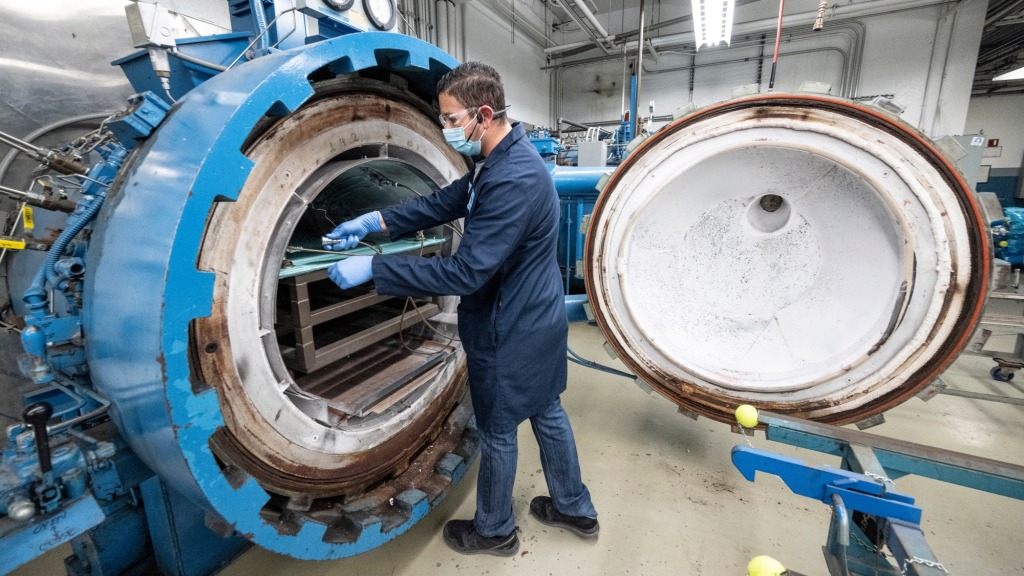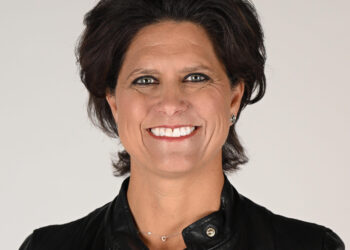Anyone who has experienced turbulence aboard an airplane has likely looked out the window, wondering how the aircraft stays intact through the sometimes bone-rattling bumps.
Tucked on a 15-acre complex in Anaheim’s industrial district is a company that helps to keep myriad plane parts from coming unglued.
Solvay, a Brussels-based business, and a team of 400 employees in Anaheim stress test materials, adhesives and coatings on clips and brackets that hold the outer skin of commercial jets, private planes and helicopters together.
The company’s history extends back to the space race of the 1960s, and today its products and expertise are a part of the next race for the skies with promises of flying taxis and regular trips to the moon.
Lisa Walton, the company’s market segment manager, says the materials made by Solvay are used on parts like airplane wing flaps and tips, around aircraft windows and on rotorcraft panels “that get a lot of use and abuse.”
Solvay also makes thermoplastic composites, which are used for aerospace applications, while its adhesives, aircraft film and specialty polymers are used on fixed-wing aircraft, rotorcraft, aircraft propulsion systems and space launches.
The materials, she says, are key to the integrity of an aircraft.
Before the pilot ever sits in the cockpit — even before the manufacturer gets to work on molding the wings, fuselage and engine — Solvay’s team runs durability and performance tests to find the right composites, adhesives and other materials that can withstand the stresses of air travel.
Lightweight and tough, thermoplastic composites soften when heated and can be molded into whatever shape is needed. When they cool, they retain their shape and are extremely strong.
“The materials are anywhere from 12 inches wide to 60 inches wide, and they’re only 0.005 inches thick — like pieces of paper,” Walton said. “They are stacked up and put into an autoclave where the pressure consolidates them…
Read the full article here







